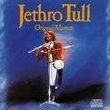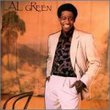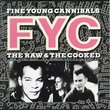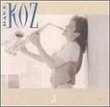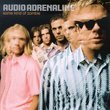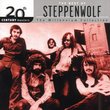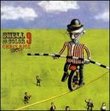| All Artists: George Harrison Title: Somewhere in England Members Wishing: 11 Total Copies: 0 Label: Capitol Release Date: 2/24/2004 Album Type: Extra tracks, Original recording remastered Genres: Folk, International Music, Pop, Rock, Classic Rock Styles: Europe, Britain & Ireland, Singer-Songwriters, Singer-Songwriters, Psychedelic Rock, Album-Oriented Rock (AOR) Number of Discs: 1 SwapaCD Credits: 1 UPC: 724359408828 |
Search - George Harrison :: Somewhere in England
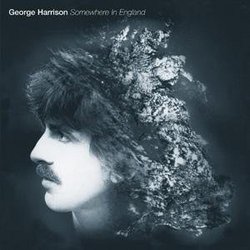 | George Harrison Somewhere in England Genres: Folk, International Music, Pop, Rock, Classic Rock
|
Larger Image |
CD DetailsSimilarly Requested CDs
|
CD ReviewsConsidering the behind-the-scenes goings-on, it still works 29-year old wallflower | West Lafayette, IN | 02/19/2005 (4 out of 5 stars) "The 1980s were looking bright for the individual Beatles, at least at the beginning of it. John Lennon was about to re-enter the studio to record his album DOUBLE FANTASY after 5 years spent being a father to Sean. Paul McCartney freed himself from the constraints of leading a band by starting work on MCCARTNEY II, his first solo album since 1971's RAM (although I consider his Wings albums to be Paul's and his alone). Ringo Starr was hitting a very rough patch musically, but personally he was over the moon after meeting the woman who would become his second wife, actress Barbara Bach. For George Harrison, he was in the midst of personal joys himself, having married one of his personal assistants at Dark Horse Records, Olivia Arias, and then witnessing the birth of his only child, Dhani. Musically, he was holding steady after 1979's self-titled album did reasonably well, and had a top 20 hit with "Blow Away". Supposedly, George began work on SOMEWHERE IN ENGLAND almost immediately afterwards, and was said to be ready for the record stores around the fall of 1980. But Dark Horse's parent company, Warner Bros. Records, did not really care for the final product, and insisted George re-enter the studio to record new material. Naturally, he was none too happy about this proposition, but acquiesced, making sure some of the new songs hit the company right where they hurt. It is a wonder they considered the revised album worth a release this time, and so SOMEWHERE IN ENGLAND at last hit the racks in early summer 1981. If one good thing came from these interminable delays, it was the song that returned George to the top 10 for the first time since 1973's "Give Me Love [Give Me Peace On Earth]". Shortly after George went back into the studio for the second time, his old friend and Beatle mate John Lennon was brutally murdered, causing not just friends and family to mourn, but the entire world. Paul would write & record "Here Today" as his tribute to John for his 1982 album TUG OF WAR. George beat him to the marketplace with his own elegy, "All Those Years Ago", which by a wonderful twist of fate became an unofficial Beatles reunion over a decade before the ANTHOLOGY. Ringo Starr agreed to play drums on the song, while Paul & his wife Linda sang backing vocals. Add to that engineering by Geoff Emerick & string arrangements by George Martin, and it is a labor of love that had to have John smiling from above. The sprightly country-rock-tinged number deservedly peaked at #2 on the charts, and manages to pay a unique tribute to John with the lines "They've forgotten all about God/He's the only reason we exist/Yet you were the one that they said was so weird". Odd coming from a deeply religious man like George, and to a man who had uttered the infamous "The Beatles are bigger than Jesus" remark & had recorded "God", in which he doubted His very existence. Although I am sure John would have appreciated the irony. Like that song, SOMEWHERE IN ENGLAND is mostly an upbeat affair despite the blackness of the original cover that has been restored for the reissue, and was one of the things Warner Brothers wanted changed. "Life Itself" is a heartfelt tribute to Olivia, and shows that George has been softened somewhat by new love. "That Which I Have Lost" is not as obvious an anthem, but the chorus seems to indicate one: "I need someone to show me/illumine my consciousness/remove the dark from in me". Maybe at last he found it. Even a potentially mournful song like "Teardrops" is positively buoyant & borders almost on new wave. This particularly applies to the songs which had George striking out against the record company backroom boys telling him what to do. "Blood From A Clone" & "Unconsciousness Rules" show that cynical wit that George always had and, towards the end of his life, would get sharper. The fact Warner Brothers agreed to release such potentially libelous tunes means they either missed or got the joke completely. With an attitude like that, perhaps it is no surprise George recorded less & less over the years. When an artist who is as fine a songwriter as George, should they ever include covers on an album, that could mean they are running out of ideas. Who knows if that was the case on SOMEWHERE IN ENGLAND, which featured two of them. Maybe it was George's underhanded dig at recording material that his label would have rather had him do. Either way, Hoagy Carmichael's "Baltimore Oriole" & "Hong Kong Blues" manage to fit somehow, showing that George can be a great interpretor as well as a creator of standards himself. For someone who helped organize the Concert For Bangladesh, George has always been a sociopolitician at heart, and SOMEWHERE IN ENGLAND still allows for those opportunities to preach ever so slightly. "Writing's On The Wall" seems to have more cynicism in its veins, as if George is throwing up his hands in defeat & that the world is in too much a state of disrepair to be saved. But the album closes with more optimistic vibes on "Save The World", continuing the album's primary mood of bounciness. While still a bit biting in its wit, George does not lose faith even in the song's first line: "We've got to save the world/Someone else may want to use it". Truer words were never spoken, and are ones John would have certainly written. With George's Dark Horse albums now finally back in print after several years out of it, it would have been nice if the bonus tracks on SOMEWHERE IN ENGLAND had been more plentiful. The four songs that were said not to have made the final cut could have been welcome additions rather than just a demo of "Save The World", which is not a patch on the version that finally reached fruition. George Harrison may have been a little ticked off by his record company's nitpicking over SOMEWHERE IN ENGLAND, but he still did well enough for himself in creating one of his better albums, in my opinion. Soundwise, it proved that George was ready to transfer into the high-gloss & high-concept atmosphere of the 1980s, a route Paul would continue in as well. But maybe George's battles with his label did sap him of some enthusiasm, for his follow-up GONE TROPPO (1982) would be a commercial disaster, and is often ranked as his worst album (considering 1974's DARK HORSE & George's insistence on recording & touring for it while battling severe laryngitis, that speaks a lot). However, even if the bloom was off the rose when it came to records for George, SOMEWHERE IN ENGLAND showed he could still give it the old college try when he wanted to. First & foremost, he proved that when the record business tries to interfere with productivity, one should thrive, not cave." Memorable but uneven album from George Wayne Klein | My Little Blue Window, USA | 02/25/2004 (3 out of 5 stars) "Until the "Threatles" reunion with John Lennon via tape for the Anthology series, "Somewhere in England" featured the closest thing to a Beatles reunion for fans. The jazzy single "All Those Years Ago" was written before Lennon was murdered and given to Ringo to record. After John's death, Harrison retooled the lyrics and recorded it himself as a tribute to his bandmate and friend. Featuring Paul McCartney (with Linda and Denny Laine on backing vocals)and Ringo Starr (on drums), "All Those Years Ago" works despite some awkward lyrical bits. It's one of George's most memorable songs on the album.When George first submitted "Somewhere in England" for release, it was rejected. He was told by Warner Brothers that it wasn't all that good. George went back, rewrote the scathing "Blood from a Clone", remixed some of the album, recorded two Hoagy Carmichael songs and resubmitted it. Warner Brothers felt that "Somewhere in England" had commerical clout now and released "All Those Years Ago" to great airplay and substanial sales. What we have here is a compromised album. While it features the original rejected artwork for the album, the running order is for the revised released verrsion. It's a pity as the songs dropped from the album would have made marvelous bonus tracks. While I appreciate (and liked)the original artwork, I would much preferred to have the original album in its original unreleased running order with the new tracks as bonus tracks (or with the original released running order and the dropped tracks as bonus tracks). What we get, instead, is a single bonus track (the demo for the fine song "Save the World"). It's a pity as Capitol missed an opportunity here. Still, "Somewhere in England", while it isn't George's best album, sprinkles a number of memorable tracks throughout the disc. The sharp remastered sound by Simon Heyworth brings the album's original production touches to life in a way the previous version of the album was unable to do. This remastered edition also features a 12 page booklet with lyrics and photos from the same time frame as the sessions. Although not the best of George's solo work, "Somewhere" features enough good material to give it a place next to his better produced and written albums." "Somewhere In England" revisited Mark Hanser | Boston, Massachusetts | 10/07/2005 (3 out of 5 stars) "I've been a Harrison devotee since, well forever, and I have to say that I'm very disappointed in the re-release of Somewhere In England. I was always under the assumption that, once the album was re-released, the four wonderful missing songs that the Brothers Warner deemed uncommercial - "Tears of the World," "Sat Singing," "Lay His Head," and (especially) the transcendent "Flying Hour" - would duly be included. So it's bizarre to have the original album cover (a pun: "Some-HAIR in England - get it?) but not the original trax that were supposed to go with that album! "TOTW" is now on the remastered 33 1/3, which is even more bizarre, because it has nothing to do with that album (a better bonus track on 33 1/3 would've been George's duet with Paul Simon on "Saturday Night Live" in 1976 - "Here Comes The Sun" + "Homeward Bound".) Following EMI/Capitol's always-scewed corporate logic, if "Lay His Head" was the b-side of "When We Was Fab," why isn't that track on the remastered "Cloud Nine"?
But back to what is: I've always loved "That Which I Have Lost" - the lyrics are a bit wordy, but the melody is eccentric and exquisite, so original and so Harrisonian. For me, the best part is that absolutely spectacular slide guitar solo, absolutely incredible. "Life Itself" and "Writing's On The Wall" remain rewarding listening pleasures, the sonic textures as evocative as the words. And "Blood From A Clone" remains an effective, hook-laden indictment of the conformity of commercial radio. But problems remain: George's once-beautiful voice never recovered from the hoarseness caused by his 1974 Dark Horse tour, and he simply didn't have the range to cover the two Hoagy Carmichel tunes he sings here. "Save The World" was a most annoying closing track in 1981, and now, followed by a demo version of the quasi-Pythonesque number, it's doubly annoying now. (Harrison did another, much better version of "STW" for a Greenpeace compilation - howcum that's not on here?) I do hate to say that I've always found "All Those Years Ago" awkward - George Martin's string arrangement is swell, as is George's sweet guitar solo, but the lyrics aren't George's most poetic, and they just don't fit the music. But George had said he knew what John would've liked, and who are we to doubt that? In many ways George was, with the obvious exception of Yoko, psychically closer to John than any other human being on the face of the Earth - think of the "dental experience" as just one example. Speaking of Yoko, the friendship that finally developed between her and George blossomed around the time of the "Anthology" project. They're both Pisces after all. I suspect she was reaching out to George by giving him (not Paul or Ringo) the demo tapes for "Free as a Bird" and "Real Love," since George seemingly felt so devastated after John grew closer to her and less close to George even before the Beatles break-up. For all its flaws, "All Those Years Ago" remains Somewhere In England's signature track, and the sense of loss that Harrison felt about losing his childhood friend Lennon here sounds hearbreaking and real, and is echoed elswhere on the album. Not as sublime a collection as his previous eponymous album but what's good here is very, very good and certainly worth possessing." |

 Track Listings (11) - Disc #1
Track Listings (11) - Disc #1
